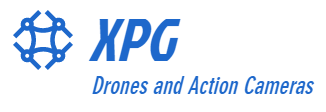Flying a drone on private property
Although drones can be enjoyed and used for a range of commercial and humanitarian applications, many people find them to be a nuisance and an invasion of privacy. There are also many concerns in regards to drones interfering with regular aviation, putting aircrafts and civilians at risk. If you are flying a drone on private property, it is important to be aware of and follow the latest rules and regulations.
The rules governing drone operations in Canada are recorded in the Canadian Aviation Regulations (CARs). Fortunately for users of small, recreational drones weighing less than 250 grams, the rules are a lot more relaxed. Smaller drones do not need to be registered and the operator does not need to get a drone pilot certificate. XPG Drones has a great range of affordable options for a wide range of drones.
Strict regulations apply when flying a drone on private property that weighs from 250 grams to 25 kilograms. The regulations are designed to protect the public as well as aircraft.
Below are the main points of the CARs for drones in this category:
- Drones/UAVs to be registered with Transport Canada
- Drone pilot certificate required
- Maximum flying height of 122 meters
- Visual line of sight (VLS) must be maintained at all times
- Drone flights prohibited at advertised events, parades, outdoor concerts, forest fires and emergency sites
- The privacy of others must be respected
- Flights prohibited near bystanders (30 meter distance from basic operations to be maintained)
- Keep a good distance from other aircraft including helicopters and other drones
- A distance of 1.9 kilometers must be maintained from heliports and 5.6 kilometers from airports
Specific details of the CARs can be read here.
Basic or Advanced Operations
There are different rules for basic and advanced operations. It is important to understand which category you fall into.
Advanced operations apply if you intend to do any of the following:
- Fly over or within 30 meters of bystanders
- Operate in a controlled airspace
If you fall into this category, there are additional rules:
- An Advanced Operations Pilot Certificate is required
- Pre-flight survey required to observe power lines, buildings and other obstacles
- Drones must comply with RPAS Safety Assurance standards
Restricted areas
In some areas, drone use is specifically prohibited unless approval is given by Transport Canada. These areas include:
- National parks
- Border crossings
- Close proximity to aerodromes or airports
- Densely populated areas
These rules will generally not apply when flying a drone on private property unless it contravenes any of the above regulations. While the rules are there for protection the best way to operate a drone is to exercise common sense and decency. People have privacy concerns or are simply irritated by the presence of drones. If not operated safely they can also pose a significant risk.
Understand the rules and consider the environment and those around you. Always remember that individual provinces may have their own rules and bylaws relating to drone flights.
Conclusion
If you want to enjoy flying a drone on private property you will have a lot of freedom provided you understand and follow the rules outlined above. If you are looking for an exciting drone at a good price and great service, check out XPG Drones and Action Cameras today!

